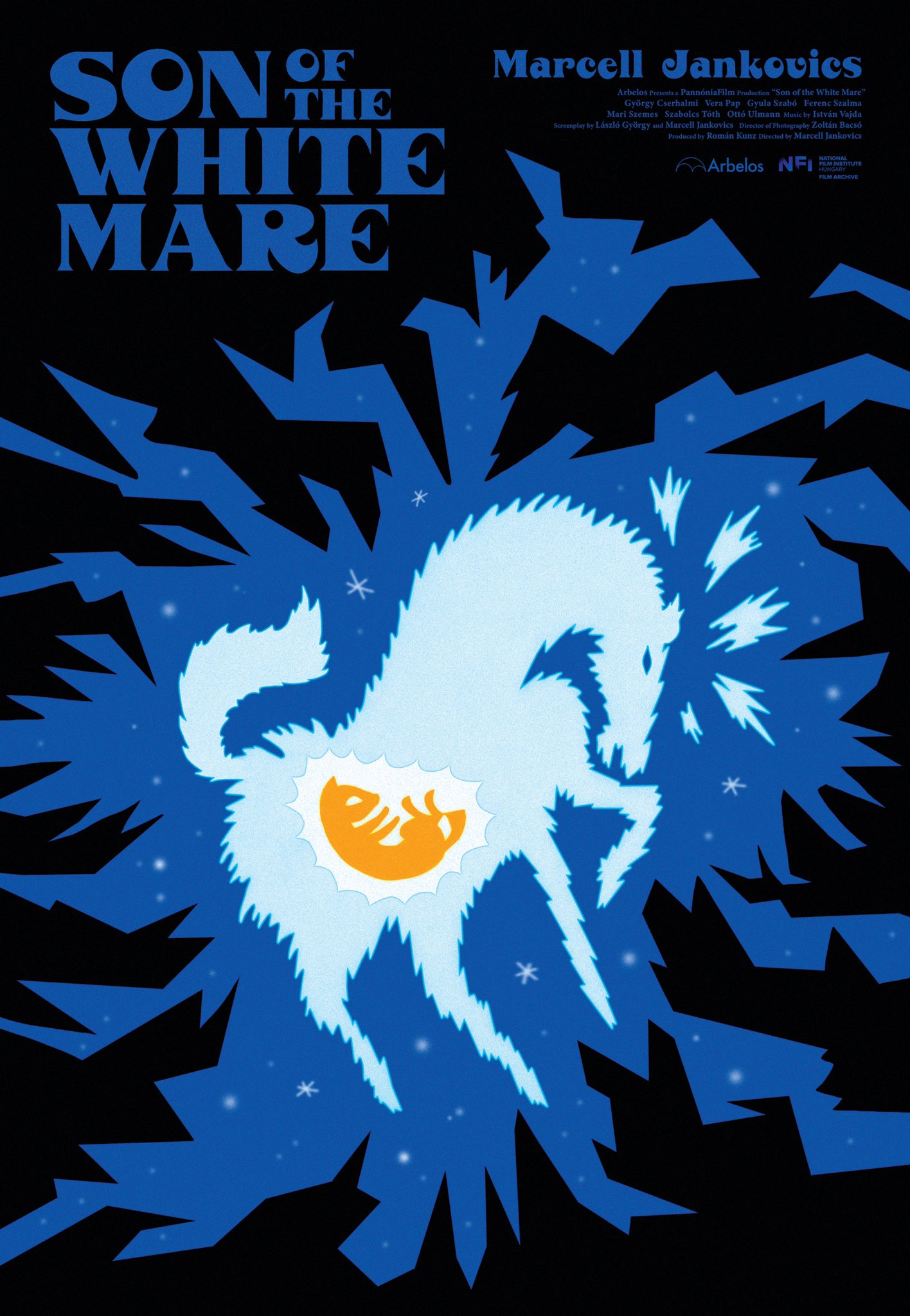Son of the White Mare (Fehérlófia) (1981)-Kingdom Restored (1981)
Filed under: Animation, 1980s, Color, Hungarian animation, Hungary, Marcell Jankovics, Pannonia Studio, psychedelic animation, Technicolor,
Son of the White Mare (Fehérlófia) (1981)-Kingdom Restored

Poster of Son of the White Mare
Directed by: Producers:Román Kunz
Animated by:Edit Baksa
Anna Botlik
Katalin Bánki
Nóra Javorniczky
Ilona Kiss
Péter Kozma
Istvánné Kuzma
Richárdné Küsztel
András Paulovics
Gabriella Prunner
József Schibik
Tamás Szabó
Edit Szalay
Gabriella Szutor
Anna Szórády
János Uzsák
Zoltán Vas
Sándor Vágo
Zsuzsa Zsáky
László Ádám
László Újváry
István Vajda
Layouts by:László Hegedüs
Marcell Jankovics
Zsolt Richly
László Hegedüs
Studio:Pannoia Film Studio (Pannónia Filmstúdió)
Release date:22/10/1981
Running time:1h26min (full version), 2 min (clip)
Color process:Technicolor
Synopsis
Based on a Hungarian folktale of the same name, Son of the White Mare (Fehérlófia) tells the story of three sons of a white mare—Fanyüvö the Treeshaker, Kömorzsoló the Stonecrumbler, and Vasgyúyó the Ironrubber—who restored a lost kingdom and abducted princesses from the Underworld, where three multi-headed dragons resided. The selected clip shows the ending scene when, after the victory against the evil dragons, each son married one of the princesses as they entered the castles, symbolizing ruling realms. The three couples lived happily ever after.
Reception:
In an interview, director Marcell Jankovics explained how his obsession with the concept of cycle contributes to the use of Johann Wolfgang Goethe’s colour wheel when colouring scenes from Son of the White Mare. The morning, noon, twilight, and night correspond to green, yellow, red, and blue, with each transitioning to one another endlessly (Inoa). Jankovics also explained the allegorical meaning of the three dragons in terms of their relation to human society. The first dragon in giant clay represents the distant past of humanity in the Stone Age; the second in the hybrid form of tank and battleship represents the recent past in the 18th to 20th centuries; and the third dragon resembling moving cities represents the present and the future (Inoa).
Son of the White Mare did not go well in the box office at the time it was released in Hungary, especially when people had concerns with the animation’s portrayal of violence and psychedelic art form being inappropriate for children (Osmond). However, the animation soon became a cult classic, with many Hungarian youth fans joking that Son of the White Mare’s psychedelic appearance was a result of Marcell taking drugs during creation (Inoa).
Son of the White Mare received a 4K digital restoration by L.A.’s Arbelos Film and the Hungarian National Film Institute. The restoration premiered at the Fanatasia Festival in 2019 and was released in U.S. in March 2020 (De Wit, Jakovics). The full movie is now available on Vimeo.
References:
De Wit, Alex D. “‘Son of the White Mare’: The Journey of the Cult Classic’s 4K Restoration (Interview).” Cartoon Brew, 21 Aug. 2020, www.cartoonbrew.com/streaming/son-of-the-white-mare-the-journey-of-the-cult-classics-4k-restoration-interview-195577.html. Accessed 1 Mar. 2024.
Inoa, Christopher L. “Eternal Cycles: Hungarian Animator Marcell Jankovics on “Son of the White Mare”.” Notebook Interview, 3 Sept. 2020, mubi.com/en/notebook/posts/eternal-cycles-hungarian-animator-marcell-jankovics-on-son-of-the-white-mare. Accessed 1 Mar. 2024.
Jankovics, Marcell, and Elek Lisziak. “Son of White Mare: Hungary, 1981 – 85 Minutes.” 100 Animated Feature Films, Bloomsbury Publishing Plc, 2022, pp. 162–63, https://doi.org/10.5040/9781839024450.0081.
Osmond, Andrew. “Son of the White Mare.” Sight and Sound, vol. 33, no. 1, British Film Inst, 2022, pp. 143–143.
External Links:
IMDb webpage: https://www.imdb.com/title/tt0083931/
Full movie on Vimeo: https://vimeo.com/ondemand/sonofthewhitemare
